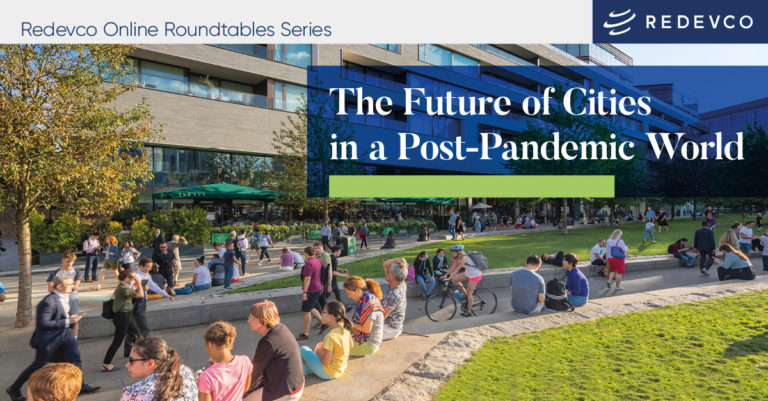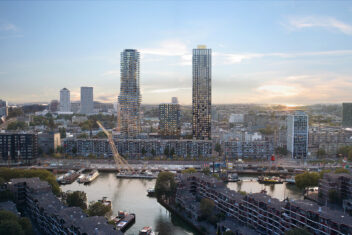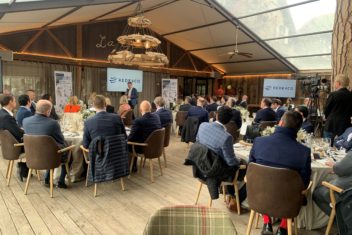‘Point of Sale’ Replaces ‘Place of Sale’ as Smart Phone-Wielding Shoppers Sow Creative Destruction in Great Retail Reset – Redevco Roundtable
April 12, 2021

The spending patterns of fickle consumers armed with smart phones have become more unpredictable during the Covid pandemic, exposing the growing liquidity mismatch between mono-purpose retail properties and highly mobile shoppers, speakers on a recent Redevco online roundtable: ‘The Great Retail Reset,’ concluded. Retail locations have to become far more flexible and ‘pop-up,’ when the only stable reference is the ‘point of sale,’ requiring landlords to get much closer to consumers to capture volatile income streams and avoid diminishing values for assets locked into fixed locations, leases and themes.
“What we see now is what I would call a bit of good, old-fashioned creative destruction and I think it’s all being driven by consumer behaviour and consumer changes. Everyone, from Millennials to Baby Boomers, is better informed, more aware, very clear about what they want, and where and why they want to shop. I think there’s a significant increased awareness in sustainability, and people looking for things sourced and bought locally, not just food but also clothing…Probably for many landlords — hopefully it won’t be us — there will be value loss, because their buildings do not have the intrinsic value to be something else and the economics won’t stack up,” Redevco CEO Andrew Vaughan told the first in a series of webinars on: The Future of our Cities in a Post-Pandemic World.
Locational value will determine the destiny of a building, he added: “Some buildings that are shops today and were shops 50 years ago will probably still be a shop in 50 years’ time. The better locations in the better cities will either just stay retail forever, or they’ll become something else as long as they’ve got locational value. Redevco typically invests in retail high street properties which are already often mixed-use buildings, with offices or hotels above, he added. “I think there are a lot of really interesting opportunities to create new, fully mixed-use buildings, where you can build a community around multiple use.”
Pandemic principles of progress
Futurologist and trend analyst Christine Boland told the Redevco webinar that nowadays everything revolves around people’s need to reinvest meaning into objects and systems that surround them: “Uncertainty prevails, and we, as human beings, have to deal with not knowing what will happen tomorrow, and we will have to develop resilience, which will also impact the way we deal with our cities. ‘Re’ is the keyword to almost everything nowadays: redesign daily life; rethink the system; revalue the online world; reconnect; recalibrate; and reimagine retail,” she added.
Successful retailers are those who tap into shared values and understand the bigger picture, for example the shift from global to local, retail to residential – or a mix of both – from ownership to access, exclusion to inclusivity, Gross Domestic Product to a Gross National Well-being index and a male-oriented target-focused approach to a more feminine and holistic way of thinking. Boland went on to explain how the blurring boundaries between our physical and virtual worlds and mixed realities are creating fields of tension but also exciting opportunities for new and creative multi-dimensional concepts.
The signs of our times are reflected in enormous shifts in the retail landscape, Boland said. Brands are becoming media platforms with online – shoppable – livestream videos, members-only content, apps and so on while brick-and-mortar stores are no longer just a store; they are turning into a stage for retailers to tell their story, where their staff are connoisseurs and really connect with the community around their brands. An IKEA store in downtown Vienna is a meeting place where no cars are allowed because all items can be delivered to the home.
Boland also pointed to the Rituals brand opening its first 360-degrees experience store in Amsterdam during the pandemic: “The first two floors offer bespoke Ritual products, the third floor is a body spa, and the fourth floor is Europe’s first mind spa. You can even create your own perfumes and fragrances…That’s living the brand. The future of retail is all about either time well saved, or time well spent. That will help you to define your retail choices.”
Put the consumer first
The key to remaining relevant amid the huge upheaval under way in the retail sector and the many impulses consumers are exposed to, is to put their wishes first, Lot Frijling, Founder of Yellow Concepts in the Netherlands, told the webinar.
“Creating something distinctive is difficult, but it’s necessary and crucial to remain relevant to your consumers – to human beings – and to create an emotional bond with them. Are you really interested in what your consumers want, or what they don’t even know they want — because often that’s even more interesting — and are you really curious about their needs, their conscious needs but especially also their unconscious needs?…Can you really, as a brand or as a shop or as a retailer, get into your consumers’ minds?…Not only the things they are longing for right now, but also the future needs of future generations?”
An example of a unique concept that has turned ordinary buildings into magnetic, high-traffic locations include “The Jewel” at Changi Airport in Singapore – a park in the middle of a transport hub where you can also take a plane or a train or eat and shop.
“What we try to do is to combine all our insights, relevant trends, consumer wishes, and business ambitions, into one simple overarching concept. It’s always about the big idea. What is the story your consumers or your guests or your employees or your ambassadors are going to tell about your location? It’s a learning process: testing, failing, testing, and every time improving new business ecosystems,” Frijling concluded.
The nature of risk and return in retail needs to be redefined
The pressure upon retail landlords to more profoundly understand rapidly evolving consumer and social trends, so they can successfully recalibrate their portfolios accordingly, requires a new definition of investment risk and much closer collaboration with tenants, Marrit Laning, Fund Manager and Co-Head Client Relations at Redevco, said:
“I think risk perception is really changing. Before we were looking at getting the longest possible lease contract with a tenant to obtain security of income, but we are now adapting our thinking…What does it mean to the environment if you have a building that is not really doing anything for the public? In that sense, having shorter lease contracts may be a better solution for some locations where we may need to work continuously on keeping the building relevant,” she noted.
“The financial returns will, of course, always be important, but I think there will be a slightly greater focus on social and environmental returns, and the contribution to the change that’s really needed in this world. It’s only logical now that these two topics have really climbed up the agenda since the pandemic…It’s not easy, there’s no blueprint here, but I think we need to be bold and ambitious at this time.”
One standout opportunity are the upper floors of retail properties which are often poorly utilised: “By thinking really hard about what you can do with those upper floors, you’re also giving back more space to cities and revitalising them by adding different functions such as a hotel or something exciting on the rooftop…I think mixed-use in the future is much more than just stacking different uses on top of each other; it’s really about trying to make something that’s very relevant, that’s more than the sum of the parts.”
The Great Retail Rest ushered in by the pandemic provides an opportunity to convert obsolete assets into something different and exciting that better meets the needs of people and cities in the future, Laning concluded: “This will require a substantial investment programme, and I feel it’s a big responsibility, because the chance to redevelop assets doesn’t come along so often in the real estate life cycle — maybe once every 20 or 30 years. So, it’s a challenge to make the most of it, and hopefully also contribute to the transition that is needed in our cities.”
Keep an eye on the Redevco LinkedIn page for more information on the next Redevco roundtable


